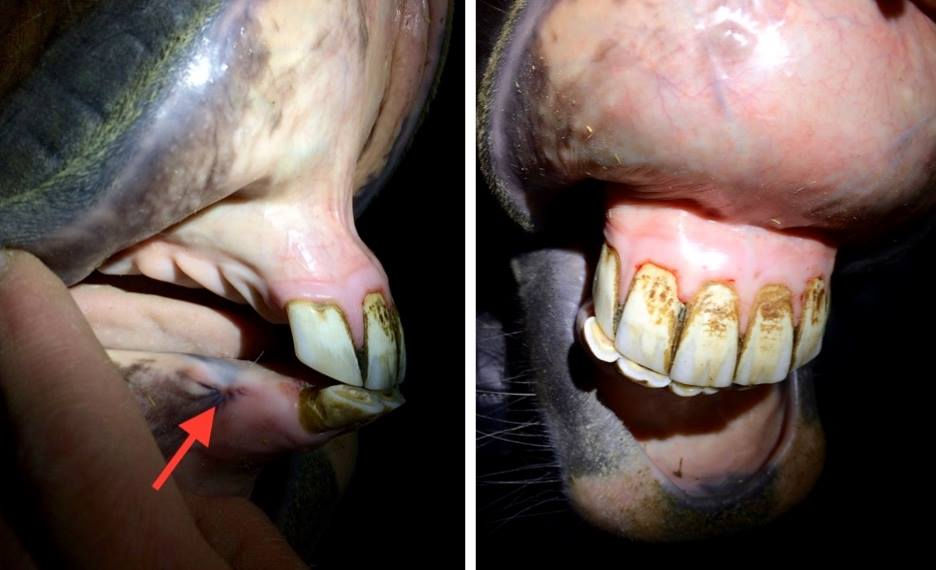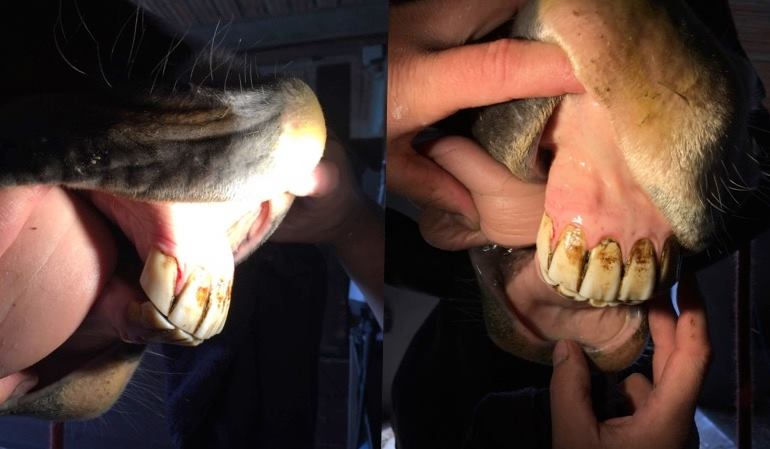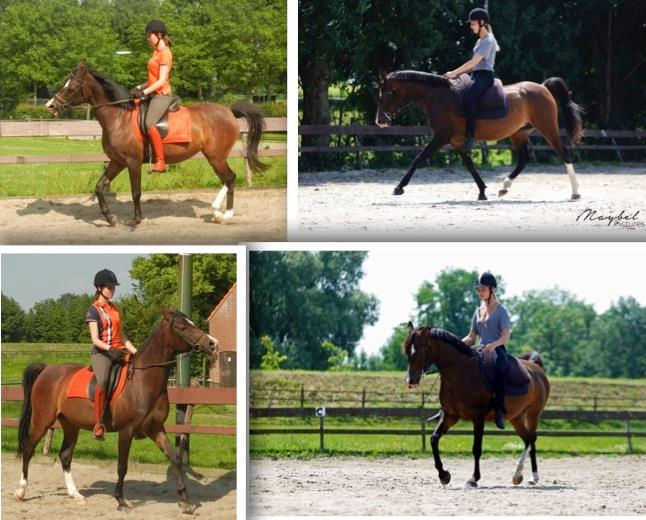JAW (DIS)BALANCES
- Thirza Hendriks
- Jan 8, 2018
- 6 min read

Whenever I visit a new horse, I ALWAYS check the balance of the jaw as it holds a lot of information about the posture of the horse and how the body functions. Many injuries are caused by horses moving in a wrong posture and something a LOT of people and horse are struggling with. People often tell me

they’re struggling with issues like:
my horse feels heavy on one or both reins; is taking the bit/rein; is resisting / against the bit / rein; is tilting the head; can’t take stelling or bend; has uneven contact on the rein; has slow / disengaging hindlegs; is on the shoulder / doesn’t align the spine etc.
These problems are usually always visible in the jaw. The jaw is one of the strongest bones in the horse’s body. A horse has an ‘upper’ jaw which is called the maxilla and a ‘lower’ jow which is called the mandibula.The anatomy of the jaw and its surrounding and connecting relations, suchs as the TMJ and hyoid apparatus, are very complex. For the purpose of this post I will elaborate a little bit on the basic anatomy & affected biomechanics in a simplified way.
The jaw is part of the so-called stomatognatic system which, except for the jaw, includes the skull, hyoid apparatus, upper cervical vertebrae, the TMJ and the sternum which are all located in the axial part of the skeleton. The main functions of the stomatognatic system are:
- Mastication and Digestion: The ability to chew and digest food are vital for the horse’s health and survival
- Balance and Neurology: The complexity of the neurological system goes beyond this post, but it is important to know that the jaw and its structures are intimately connected to the neurological system through the dura mater affecting the horse’s proprioception.
Proprioception is the ability for the horse to tell where he is in relation to the environment/space, or where his bodyparts are, or what his posture his. It is the ability to feel where he places his leg. A lack of this sensation can lead to wrong postural use of the body and injury.
Then, except for the neurological connections, there are also plenty mechanical connections throughout the WHOLE body. The skeletal/dural/spinal connection extends to the sacru
m coccyx and pelvis. There also are whole body connections through muscular level. For example, the hyoid is located from the skull down between the two mandibula, forward to the base of the tongue. Through interconnectiveness, the hyoid has relations towards the first neckvertebrae’s, to the organs, to the skull and directly to the shoulder via de ‘omohyoid’ muscle. In turn, this muscle is related to the obliques, which in turn have a direct connection to the hip joint. So the mobility of the shoulders/legs/
hip is influenced by the hyoid and vice versa.
Finally, there is also an emotional aspect. A lot of emotions are reflected in mandible movement, such as anger, stress, peace, calmness.
So in summary, when the jaw is restricted in movement, it has has a HUGE influence on three levels:
- Neurological
- Physical
- Emotional
Therefore, it is affecting the WHOLE horse. So what can cause jaw imbalances?
- Direct trauma: bumping its head, fractures, but also: hanging in the halter etc
- Secondary trauma: often, jaw imbalances are not a primary cause but a result of some other restriction in the body. As explained above, the hindlegs and the pelvis are closely related. So a pelvis issue can also result in a jaw imbalance. Or high heel low heel syndrome can also work on the jaw etc. So it’s important to know the primary cause.
- Natural assymetry: most horse have a predominant side for chewing
- Dental: It is very important to have your horse checked at least every 10-12 months and have a dentist that does not only look to sharp egdes, but also to the jaw balance.
- Tack: bad fitting tack can limit the horses movement and even do a lot of damage. A bit can do a lot of damage on the tongue if not fitted properly OR not being used properly. This has a direct effect on the hyoid and all the interconnective structures. A bad fitting cavesson or other bitless bridle can increase stress on the jaw or give uneven pressure limiting the spinal movement and interfering with neurological pathways.
- Training: Not knowing how to get your horse in balance or not being in balance yourself. Taking too much / oneven pressure on the reins, overflexing the horse, overbending the horse, training a horse from front-to-back, blocking the horse so that energy can’t flow all the way through. Using too much leg aid to push your horse forwards etc.
- Melanoma: with a grey horse melanoma could be interfering with these structures. Usually it’s not the ones you see, but the ones you don’t see.

When you look at the first picture 2 pictures on top of this page, you can see a horse with a clear jaw disbalance. In training, the rider of this horse experienced right hind leg issues (irregular), head tilting, not wanting to turn to the right, shortening of the neck, bracing at the lumbars, speeding up & falling on the shoulders. On top of that, the horse developed head shaking syndrome When I looked deeper, it all made totally sense. When you look closer to the picure, you can see a ‘dent’. This is the scar of a fracture! This horse had suffered a fracture which didn’t heal properly and had affected ALL other structures of the body. The horse had been taken to the vet multiple times for lameness in the right hind and it had been injected but it never really worked…no wonder why. The right hind wasn’t the primary cause of the lameness. It was the jaw fracture. And nobody had ever thought of these relations. Not the dentist. Not the vet. So with this horse, the jaw was a primary cause and through proper rehabiliation training with a lot of propreioceptive excercises this horse is now able to move A LOT better and the headshaking is COMPLETELY gone with the jaw almost back to normal as displayed on the the second picture above.
Again, as with all my posts, I can’t give you any specific advice for you and your horse in your specefic situation straight from paper, but there are some general tips:
- Start OBSERVING/PALPATING your horse. Does he always chew on one side? Does he smell from the mouth? Is the sound of jaw movement equal etc? You, as the horse owner / carer, see you horse more than all your professionals do. So you can observe your horse and its patterns every day and keep track of them more than anyone else helping you managing your horse can. The more information you can provide, the easier it will be for your traininer /bodyworker / veteriarian etc. to connect the dots. However, this has one condition: That all these parties COMMUNICATE to owner / each other. Good communication is necessary so we can offer the horse a full HOLISTIC approach instead of having multiple professionals just treating seperate parts of the body. The body is interconnected and so should professionals be!
- Improving your horse starts with YOURSELF! Are you balanced? Symmetrical in your actions? Do you know about anatomy / biomechanics? Ignorance can be overcome by spreading knowledge. Do you feel you’re not in balance but you don’t know why or what? There is so much knowledge available nowadays. Invest in educating yourself!
- It’s never JUST training. Its always a combination several factors. Invest in a BODYWORKER who can help you with interconnective issues. Invest in a good dentist and always ask a lot of questions. Have a critical look at your tack. Do you go with bit or bitless? And why?
- Training without FULL RELAXATION is ineffective. As soon as you feel tension in the jaw, know that there is tension in the spine, the pelvis and the front – hindlimbs. So ALWAYS prioritize to relax your horse fully before you start working.
- Your horse is ALWAYS right. So if you experience any signs of resistance / hardness the horse is TELLING you something is wrong. What you feel in your hands is a reflection of what happens in the body.
- Keep breathing. Don’t get frustrated if it takes a while. Puzzling out your horses’s body and mind takes courage and dedication. You’re doing this for longterm health for you and your horse. Remember: it’s not about the result, but the journey!
So look at your horse. Feel your horse. Ask for help or guidance if you’re struggling. You’re horse will be thankful.

Comments